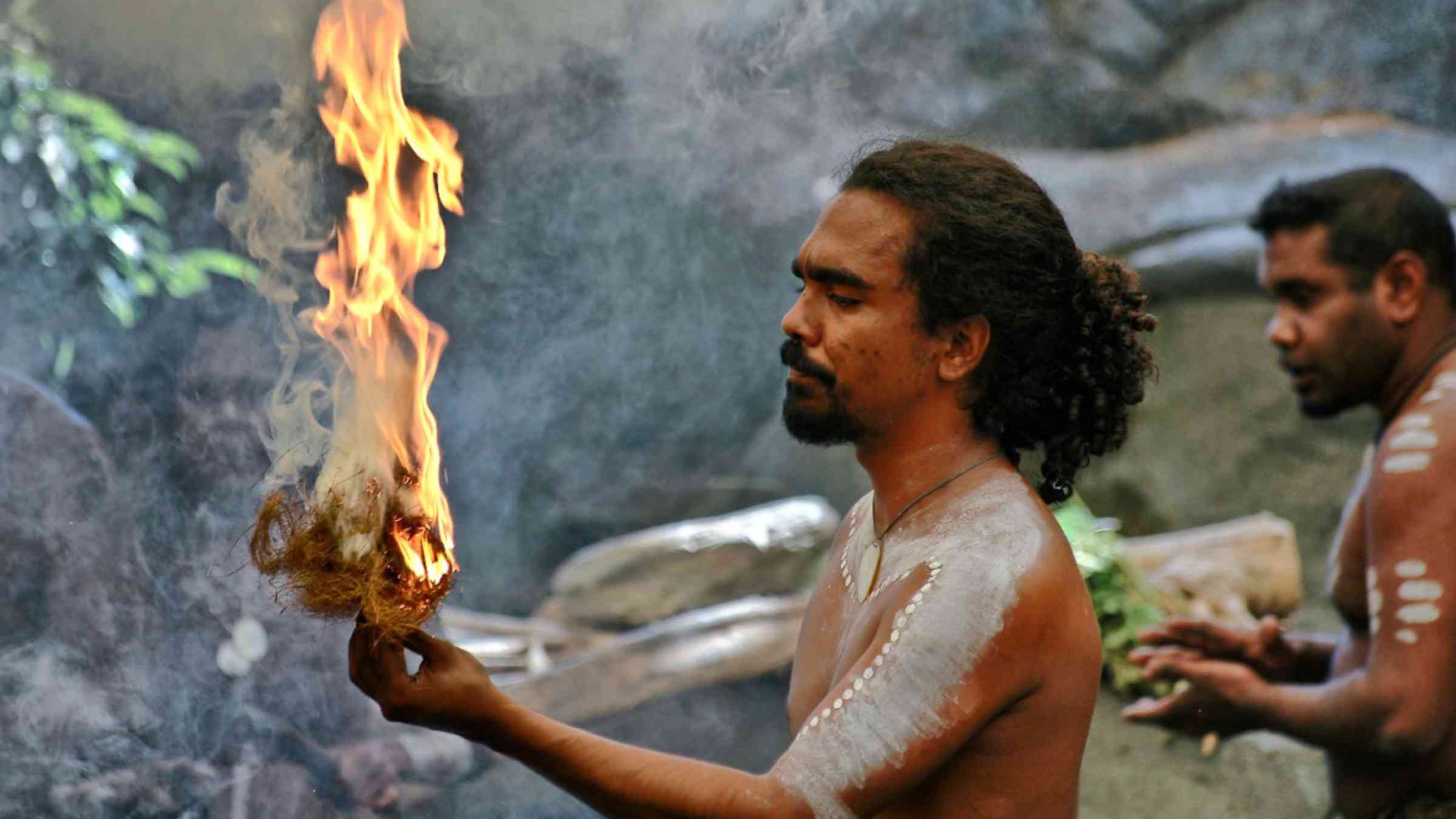New StoryMap explores how traditional knowledge addresses climate impacts

The Red Cross Red Crescent Climate Centre today launches an ArcGIS StoryMap that highlights the role of traditional knowledge in addressing climate change and extreme weather.
The new StoryMap covers 20 countries across six regions, combining climate science, cultural practices, global information system (GIS) data, and art, showing how communities are experiencing the climate crisis and some of the ways they are adapting.
The scientific story lines it includes were developed by the Climate Centre to make science more accessible and practical, helping integrate climate risks into humanitarian decision-making. In 2023, the Climate Centre created climate profiles for 20 countries affected by conflict, each including up to three story lines based on scientific analyses and climate models, offering insights into future scenarios.
These story lines are a new approach that is supporting National Societies and the IFRC and ICRC integrate climate risks into their operations, strategies and programming for intensely at-risk communities.
The StoryMap highlights traditional knowledge and how communities in conflict-affected regions address climate, environmental, and social challenges, emphasizing the importance of community-led approaches.
'Effective solutions to climate challenges can be found in the wisdom of local communities'
Catalina Jaime, the Climate Centre's leads on climate and conflict, said today: "Our StoryMap is aimed at actors interested in integrating plausible foresight into their strategic and technical planning. "It also highlights the importance to effective decision making of different knowledge-systems."
The StoryMap represents only a fraction of the totality of local knowledge worldwide: words like indigenous, traditional and local often do not fully capture its richness.
Integrating traditional knowledge with scientific understanding is crucial. The Climate and Environment Charter for Humanitarian Organizations underscores the need to blend different perspectives. Many National Societies are adopting the locally led adaptation approach, combining scientific and local knowledge systems in practice, and the StoryMap features traditional practices tailored to local environmental conditions and cultural contexts. Karez or Qanat irrigationin Afghanistan and many other countries, for example, is an ancient method of bringing groundwater to the surface and managing it sustainably.
Astronomy in Yemen, Somalia, Sudan and Yemen guides agricultural activities and community planning.*Myanmar's Yoke thé puppetry, Syrian embroidery, storytelling in Burkina Faso, dance in Mali and Nigeria, and singing in South Sudan and Sudan all improve environmental awareness and understanding of how climate is changing locally.
In the Central African Republic, artworks composed of butterfly wings reflect the relationship between art and nature.
Environmentally sound architecture in Iraq, Syria, and Venezuela demonstrates how traditional building can offer sustainable solutions.*Lebanon's use of fuzzy data (a mathematical way of capturing inescapable vagueness) for soil understanding, Ethiopia's Gadaa community-based democracy, and Venezuela's Amazon rainforest seed-exchanges are all effective for better management or land.
'Risk-informed decisions'
But such local practices tend to be under-explored by Western science. The StoryMap is an attempt to integrate traditional and scientific knowledge to address climate change by showcasing how communities are adapting to their changing environments. It will hopefully encourage policy-makers, humanitarian organizations, and the global community to more consistently integrate local practices with scientific insights. Effective solutions to climate challenges can be found in the wisdom of local communities, and by combining this with expanding understanding of how climate change can affect communities, risk-informed decisions can be made.
Ultimately, the StoryMap is a call to action. We hope viewers are encouraged to seek out and learn from diverse knowledge systems and embrace locally led collaboration to build a more resilient and sustainable future.